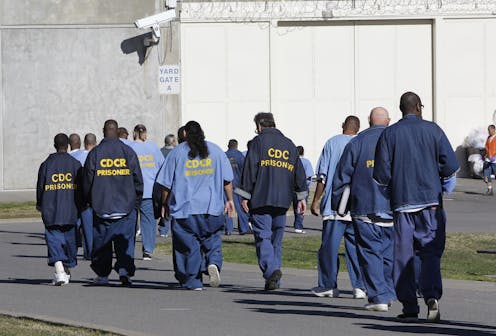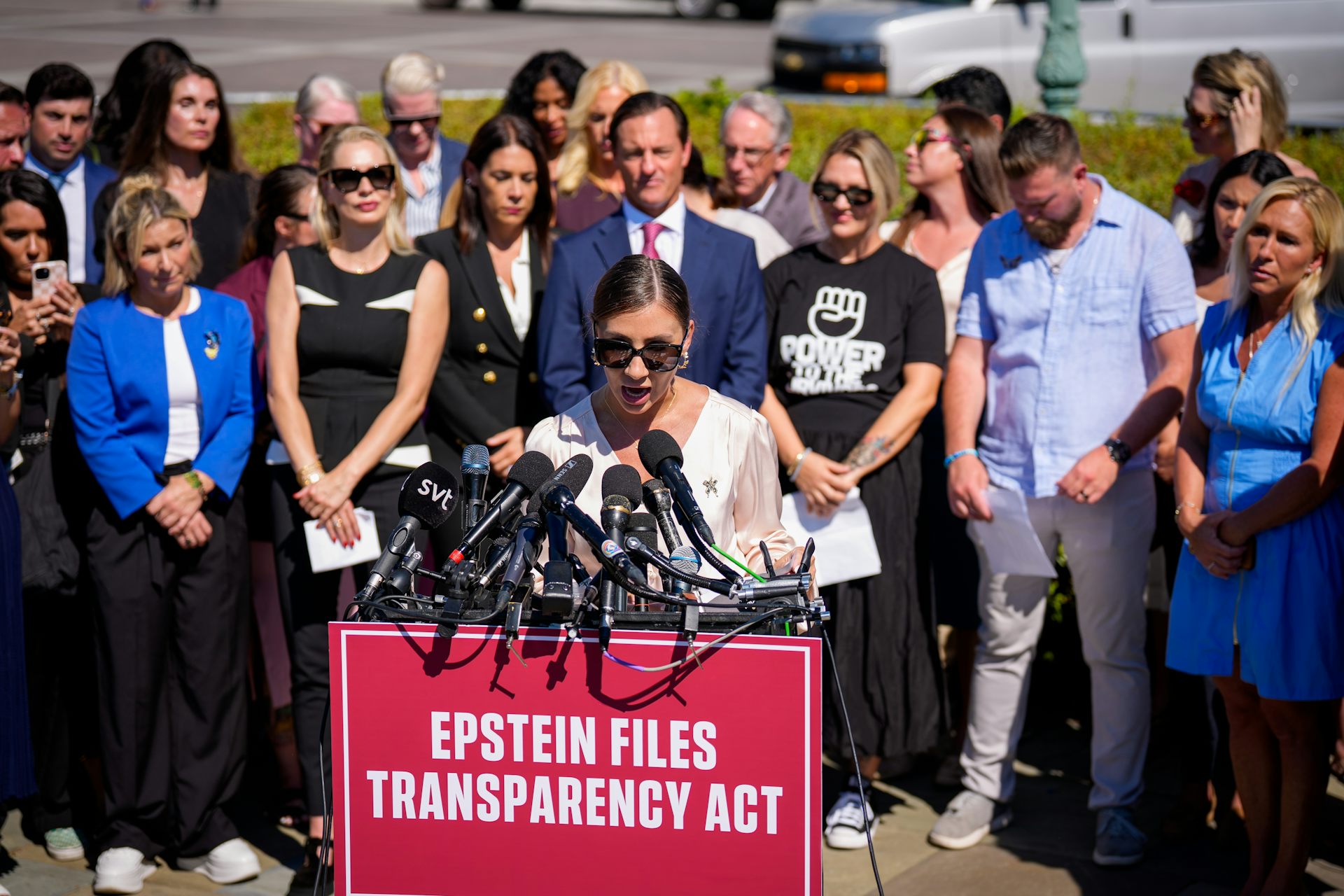Biggest racial gap in prison is among violent offenders – focusing on intervention instead of incarc
The US has one of the highest incarceration rates in the world. When it comes to violent offenders and the Black community, the system isn’t working, argue criminologists.

Racial disparities in state imprisonment rates dropped significantly during the first two decades of the 21st century.
That’s one of the main findings from a report published by one of us in late 2022, along with Georgia State University colleague William Sabol, for the Council on Criminal Justice, nonpartisan think tank.
But that headline decline tells only half the story. The narrowing is significant – down some 40% in the 20 years to 2020 – but Black adults were still being imprisoned at 4.9 times the rate of white adults in 2020, compared with 8.2 times at the turn of the century.
Of equal concern to us, as Black Americans and scholars of criminal justice, is where the largest gaps exist in imprisonment rates once you break down the data. With a steep decline in the drug imprisonment gap between Black and white Americans – from 15 to 1 in 2000 to just under 4 to 1 in 2019 – the biggest racial disparity now exists among people incarcerated for violent felony offenses. These violent offenses cover a range of criminal behavior from rape to robbery to murder.
The Council on Criminal Justice report shows that states incarcerated Black adults for violent offenses at a rate over six times that of white adults by 2019, the most recent year for which offense-specific data is available.
Both victims and offenders
It has long been accepted that the racial disparity in incarceration rates for drug offenses is the result of bias in the system. Black people do not use or traffic drugs more than their white counterparts. Rather, Black communities have borne the brunt of drug imprisonment because of discriminatory enforcement.
But this does not seem to be the case when it comes to felony violence. There is evidence to suggest that the relatively higher Black incarceration rates for violent crimes, especially homicides, are due to an overrepresentation of violent offenders and victims in Black communities.
The homicide rate for Black Americans (29.3 per 100,000) was about seven and a half times higher than the white homicide rate (3.9 per 100,000) in 2020. Black Americans were also about twice as likely to report receiving medical treatment for physical injuries sustained from an assault.
Most acts of violence involve a victim and offender of the same race. According to the most recent data available, despite accounting for roughly 14% of the U.S. population, Black Americans comprise over half of the known homicide offenders and more than a third of rape, robbery and aggravated assault offenders identified by victims.
Structural racism and violent crime
The evidence suggests that Black Americans both commit and suffer the bulk of serious violent crimes.
Of course, this should not be misconstrued as suggesting Black people are inherently more violent. Rather, it demonstrates the structural and economic barriers that Black Americans continue to face.
Striking racial gaps, rooted in a legacy of structural racism, have left generations of Black people with disproportionately less wealth and education, lower access to health care, less stable housing and differential exposure to environmental harms like air pollution. Such factors contribute to concentrated poverty, racially segregated neighborhoods and other community conditions tied to violent offending.
The recent rise in violent crime has affected all demographics, but especially Black Americans. Data from the first year of the COVID-19 pandemic in 2020 saw an average of 10 more Black lives lost each day to homicide than the year before. During this same period, the average number of white homicide victims increased by nearly three per day.
This increase was not evenly distributed across Black communities. Most Black homicide victims were young males. The U.S. Centers for Disease Control and Prevention estimates that Black men ages 15 to 34 represented nearly a third of all U.S. homicide deaths in 2021 and over a quarter since 2000.
‘Throwing away the key’ hasn’t worked
Mass incarceration and the tough-on-crime policies of the past have been unable to fix the problem.
Those who victimize others should undoubtedly be held accountable, but violent offenders already serve substantial prison terms in the U.S. A Bureau of Justice Statistics study of 24 state prison systems reported that convicted murderers released in 2008 had spent an average of almost 18 years in prison. Nearly all violent offenders (96%) served 10 to 20 years of their full sentences. In comparison with other countries, the U.S. tends to lock up offenders for more extended periods.
We believe simply incarcerating more people for longer periods is not a sustainable or efficient public safety strategy. Lengthy prison sentences temporarily stop criminals from victimizing communities while they are under confinement. However, no clear-cut evidence exists that locking up convicted offenders and “throwing away the key” provides lasting public safety benefits.
Indeed, research suggests harsher sentences offer diminishing public safety returns for two main reasons. First, people tend to “age out” of crime, in that most criminals stop lawbreaking activities by middle age. Secondly, a relatively small share of individuals commit a disproportionate amount of crime in their communities.
The effects of stiffer sentences are also weakened by the “replacement effect” common in criminal activities, by which incarcerating offenders leads to other offenders taking their place on the streets – this is true especially when it comes to violent crime involving gangs and drug dealers.
Incarceration leads to community harm
Moreover, a reliance on mass incarceration as a solution to crime has perpetuated the historical disadvantages faced by Black Americans.
Studies have consistently revealed a host of collateral damages linked to incarceration that disproportionately affects Black families. The imprisonment of a family member can cause households significant emotional and psychological distress, financial hardship from the loss of income and residential instability.
High levels of imprisonment in the community also undermine employment and community relationships necessary to reduce the likelihood of criminal activity. Reflecting both the causes and consequences of disproportionate incarceration, neighborhoods with the highest rates of incarcerated residents tend to be characterized by high rates of poverty and racial segregation.
As such, by simply implementing stricter laws and practices, legislative leadership risks further contributing to crime and social inequities.
A new, targeted approach?
So if lengthy incarceration isn’t the answer, what is? All indications suggest that improving public safety requires intervening in the lives of, in particular, young Black men. Research shows that most young Black men involved in violent crime are traumatized from being victimized or afraid of being victimized themselves. They turn to violence or carry weapons for survival, largely because of a lack of faith in the justice system.
This all points to the need for a targeted and holistic approach to reducing violent crime, which combines policing strategies focused on the offenders and places most susceptible to serious violence, with initiatives addressing the root causes of both individual and community violence.
Solving core problems through improved access to adequate education, health care, housing, services targeting at-risk youth and habitual offenders, and job training and placement is challenging but, we believe, necessary to keep Americans safer.
Research shows that interventions targeting risk factors, such as unemployment, substance abuse and housing problems, can significantly improve reentry and rehabilitation outcomes, even among high-risk individuals.
For example, in Oakland, California, community partners have worked with law enforcement to combine focused policing efforts with broad-ranging outreach and social supports to enhance trust in the system. From 2012 to 2018, the city achieved a nearly 50% reduction in shootings and homicides. However, as seen with other interventions across the U.S., much of Oakland’s progress was lost largely because the pandemic lockdowns and social distancing restrictions starting in 2020 upended the existing network of relationships and services.
Community partnership-oriented interventions able to withstand the toll of the pandemic continued to see reductions in violence and recidivism. The READI violence intervention program in Chicago, for instance, provides those most affected by gun violence with subsidized employment alongside cognitive behavioral therapy and personal development services. Early reports show an encouraging decline in arrests and gun assaults among READI Chicago participants.
In our view, these efforts suggest that while there will, of course, remain a need for consequences for violent offending, the focus needs to be more on intervention rather than incarceration.
Thaddeus L. Johnson is affiliated with the Council on Criminal Justice.
Natasha N. Johnson does not work for, consult, own shares in or receive funding from any company or organization that would benefit from this article, and has disclosed no relevant affiliations beyond their academic appointment.
Read These Next
Billionaires with $1 salaries – and other legal tax dodges the ultrawealthy use to keep their riches
The richest Americans can largely avoid paying income and other taxes. A new book explains the history.
The US already faces a health care workforce shortage – immigration policy could make it worse
About 1 in 4 doctors practicing in the US were born abroad.
Unpaid caregiving work can feel small and personal, but that doesn’t take away its ethical value
Debating whether to step back from a career to take on caregiving responsibilities can be a tough decision…





